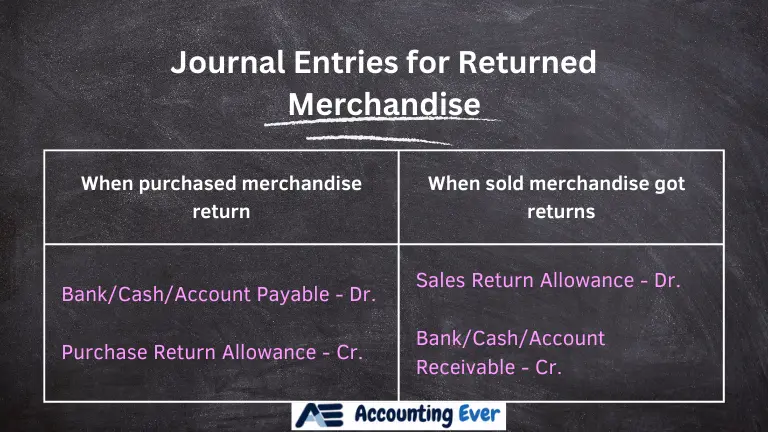A Comprehensive Guide on Returned Merchandise Journal Entries

In this blog post, we’ll delve into the depths of returned merchandise journal entries, breaking down the process step by step to demystify this essential aspect of accounting.
What is Merchandise?
Merchandise refers to goods or products that are available for sale or trade, often in a retail setting. It includes items that are meant to be sold to customers for consumption or use.
Examples: Clothing, electronics, books, toys, and any other tangible goods intended for sale.
What is a Returned Merchandise Journal Entry?
A Returned Merchandise Journal Entry is a financial record that a company creates when a customer returns previously purchased goods. This entry is crucial for accurately reflecting the impact of returns on the company’s financial statements. It involves adjusting both the revenue and inventory accounts to accurately represent the return transaction.
The Components of a Returned Merchandise Journal Entry:
- Sales Returns and Allowances Account:
- When a customer returns merchandise, a reduction in sales occurs. This reduction is recorded in the Sales Returns and Allowances account. It’s essential to categorize returns separately from regular sales to maintain accurate financial records.
- Debit: Sales Returns and Allowances
- Credit: Accounts Receivable or Cash
- When a customer returns merchandise, a reduction in sales occurs. This reduction is recorded in the Sales Returns and Allowances account. It’s essential to categorize returns separately from regular sales to maintain accurate financial records.
- Inventory Account Adjustment:
- Simultaneously, the company needs to adjust its inventory to reflect the returned merchandise. This adjustment involves crediting the Inventory account to reduce the quantity of goods sold.
- Debit: Inventory
- Credit: Cost of Goods Sold
The Impact on Financial Statements:
- Income Statement:
- The Sales Returns and Allowances account directly impacts the company’s net sales and, consequently, its net income. By accounting for returns separately, a company provides a clear picture of its revenue after considering customer returns.
- Balance Sheet:
- The adjustments made to the Inventory account affect the balance sheet by accurately reflecting the quantity and value of goods on hand. This is crucial for maintaining the integrity of financial statements.
Best Practices for Managing Returned Merchandise Journal Entries:
- Timely Recording:
- It’s imperative to record returned merchandise entries promptly to ensure accurate financial reporting and maintain the integrity of the accounting records.
- Clear Documentation:
- Proper documentation of return transactions, including reasons for returns, supports the accuracy of journal entries and provides insights into customer preferences and product quality.
- Regular Reconciliation:
- Periodic reconciliation of sales returns and allowances with sales transactions helps identify trends, enabling proactive measures to reduce returns and enhance customer satisfaction.
Bottom Line:
Understanding and correctly executing returned merchandise journal entries are vital for maintaining accurate financial records. By following best practices and comprehending the impact on financial statements, businesses can navigate the complexities of returns with transparency and precision, ultimately contributing to long-term financial health and customer satisfaction.


